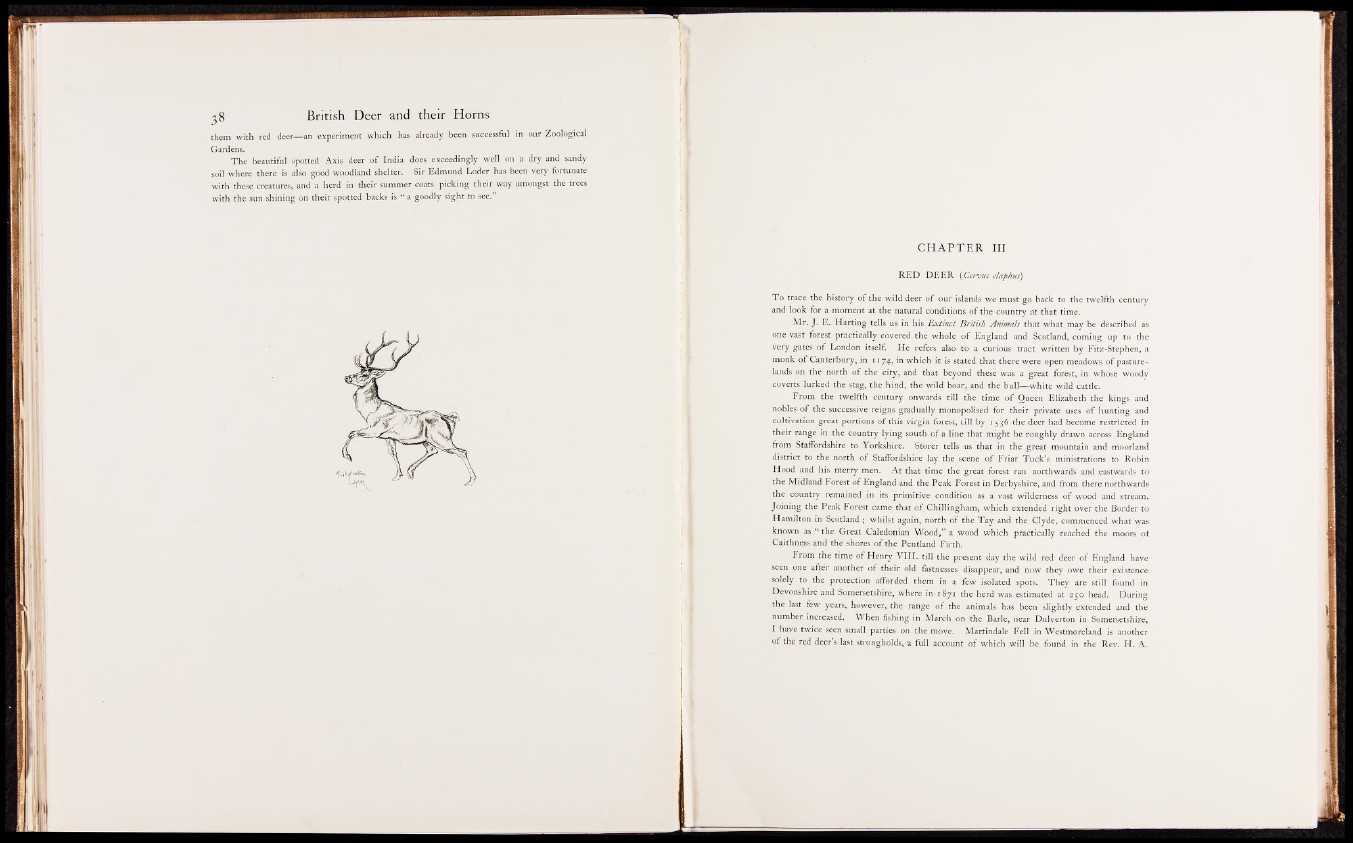
them with red deer— an experiment which has already been successful in our Zoological
Gardens.
The beautiful spotted Axis deer o f India does exceedingly well on a dry and sandy
soil where there is also good woodland shelter. Sir Edmund Loder has been very fortunate
with these creatures, and a herd in their summer coats picking their way amongst the trees
with the sun shining on their spotted backs is “ a goodly sight to see.”
C H A P T E R III
R ED D E E R (Cervus elaphus)
T o trace the history o f the wild deer o f our islands we must go back to the twelfth century
and look for a moment at the natural conditions o f the country at that time.
Mr. J. E. Harting tells us in his Extinct British Animals that what may be described as
one vast forest practically covered the whole o f England and Scotland, coming up to the
very gates o f London itself. He refers also to a curious tract written by Fitz-Stephen, a
monk o f Canterbury, in 1 174, in which it is stated that there were open meadows o f pasture-
lands on the north o f the city, and that beyond these was a great forest, in whose woody
coverts lurked the stag, the hind, the wild boar, and the bull— white wild cattle.
From the twelfth century onwards till the time o f Queen Elizabeth the kings and
nobles o f the successive reigns gradually monopolised for their private uses o f hunting and
cultivation great portions o f this virgin forest, till by 1536 the deer had become restricted in
their range in the country lying south o f a line that might be roughly drawn across England
from Staffordshire to Yorkshire. Storer tells us that in the great mountain and moorland
district to the north o f Staffordshire lay the scene o f Friar Tuck ’s ministrations to Robin
Hood and his merry men. A t that time the great forest ran northwards and eastwards to
the Midland Forest o f England and the Peak Forest in Derbyshire, and from there northwards
the country remained in its primitive condition as a vast wilderness o f wood and stream.
Joining the Peak Forest came that o f Chillingham, which extended right over the Border to
Hamilton in Scotland ; whilst again, north o f the T a y and the Clyde, commenced what was
known as “ the Great Caledonian Wood,” a wood which practically reached the moors of
Caithness and the shores o f the Pentland Firth.
From the time o f Henry V I I I . till the present day the wild red deer o f England have
seen one after another o f their old fastnesses disappear, and now they owe their existence
solely to the protection afforded them in a few isolated spots. They are still found in
Devonshire and Somersetshire, where in 1871 the herd was estimated at 250 head. During
the last few years, however, the. range o f the animals has been slightly extended and the
number increased. When fishing in March on the Barle, near Dulverton in Somersetshire,
I have twice seen small parties on the move. Martindale Fell in Westmoreland is another
o f the red deer’s last strongholds, a full account o f which will be found in the Rev. H. A.